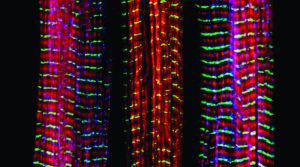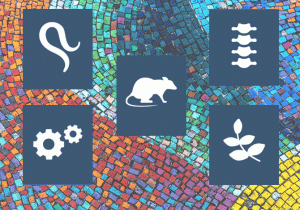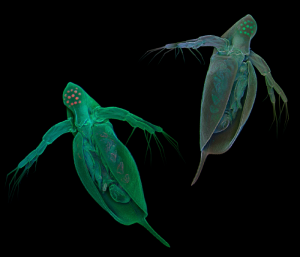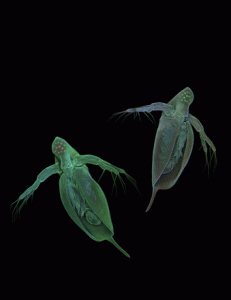Enter your address to receive notifications about new posts to your email.
Science & Publishing
-
Science & Publishing
Dysfunctional calcium release contributes to muscle weakness as we age
Strong muscles aren’t important only for athletes—declining skeletal muscle strength is strongly associated with lower quality of life and even mortality in older adults. As the world’s population ages, understanding why muscle strength decreases over our lifespans is critical to ensuring seniors enjoy a happy, healthy old age. Normally, a muscle contracts when calcium is…
-
Science & Publishing
MPP People: Elizabeth King
Multiparental populations (MPPs) have brought a new era in mapping complex traits, as well as new analytical challenges. To face these challenges and encourage innovation, the GSA journals launched the ongoing Multiparental Populations series in 2014. This month’s issues of GENETICS and G3 feature a bumper 16 MPP articles, timed to celebrate a new easy-to-use…
-
Science & Publishing
Explore the new Multiparental Populations resource at GENETICS and G3
The GSA Journals are proud to announce a brand new site for our Multiparental Populations (MPP) series. We’re celebrating this redesigned, easy-to-browse site with the addition of sixteen new papers from both journals to the series. As the field of genetics has grown, the rapid development of genomic technologies has given researchers the ability to…
-
Science & Publishing
MPP People: Andrew Morgan
Multiparental populations (MPPs) have brought a new era in mapping complex traits, as well as new analytical challenges. To face these challenges and encourage innovation, the GSA journals launched the ongoing Multiparental Populations series in 2014. This month’s issues of GENETICS and G3 feature a bumper 16 MPP articles, timed to celebrate a new easy-to-use…
-
Science & Publishing
MPP People: Geoffrey Morris
Multiparental populations (MPPs) have brought a new era in mapping complex traits, as well as new analytical challenges. To face these challenges and encourage innovation, the GSA journals launched the ongoing Multiparental Populations series in 2014. This month’s issues of GENETICS and G3 feature a bumper 16 MPP articles, timed to celebrate a new easy-to-use…
-
Science & Publishing
Neural networks dive deep to locate proteins
As in real estate, so in cell biology: location is key. Knowing where a protein localizes in a cell gives insight into its function, and new research published in G3 describes a method to accurately identify a protein’s subcellular localization through high-throughput microscopy and machine learning. To determine a protein’s subcellular localization, researchers can tag…
-
Science & Publishing
On the cover: Daphnia in the spotlight
Illuminating the cover of the May issue of G3 is a lake-dwelling filter feeder no more than a couple millimeters long. This microcrustacean—Daphnia pulex, also known as the water flea—is an important model organism, especially in ecological genetics. But despite Daphnia’s status as a model organism, no one had examined its population genomics until now.…
-
Science & Publishing
Microbial DNA repair goes nuclear
In the ruins of the Chernobyl Nuclear Power Plant—an area deemed unsafe for humans for the next 20,000 years after a catastrophic failure—life thrives. Fungi that reside there, along with other organisms that can survive large radiation doses, must have strategies to cope with the DNA-damaging effects of living at a meltdown site. In the…
-
Science & Publishing
May GENETICS Highlights
Check out the May issue of GENETICS by looking at the highlights or the full table of contents! ISSUE HIGHLIGHTS Bivariate analysis of age-related macular degeneration progression using genetic risk scores, pp. 119-133 Ying Ding, Yi Liu, Qi Yan, Lars G. Fritsche, Richard J. Cook, Traci Clemons, Rinki Ratnapriya, Michael L. Klein, Gonçalo R. Abecasis, Anand Swaroop, Emily…
-
Science & Publishing
New in G3: Daphnia genome assembly, mouse craniofacial shape, and Drosophila spermathecal cell fates
Check out the May issue of G3! Table of Contents Investigations Accurate Classification of Protein Subcellular Localization from High-Throughput Microscopy Images Using Deep Learning Tanel Pärnamaa, Leopold Parts G3: Genes, Genomes, Genetics May 2017 7: 1385-1392; DOI: https://doi.org/10.1534/g3.116.033654 Genotype Calling from Population-Genomic Sequencing Data Takahiro Maruki, Michael Lynch G3: Genes, Genomes, Genetics May 2017 7:…
-
Science & Publishing
The push-and-pull evolution of tandem-duplicated drug-resistance genes
Two highly similar genes that contribute to drug resistance in a pathogenic yeast have been co-evolving as tandem duplicates for the past 134 million years—while maintaining distinct functions. This is the conclusion of a paper in the April issue of GENETICS by Lamping et al. that examines the evolutionary effects of ectopic gene conversion. Evolutionary…











